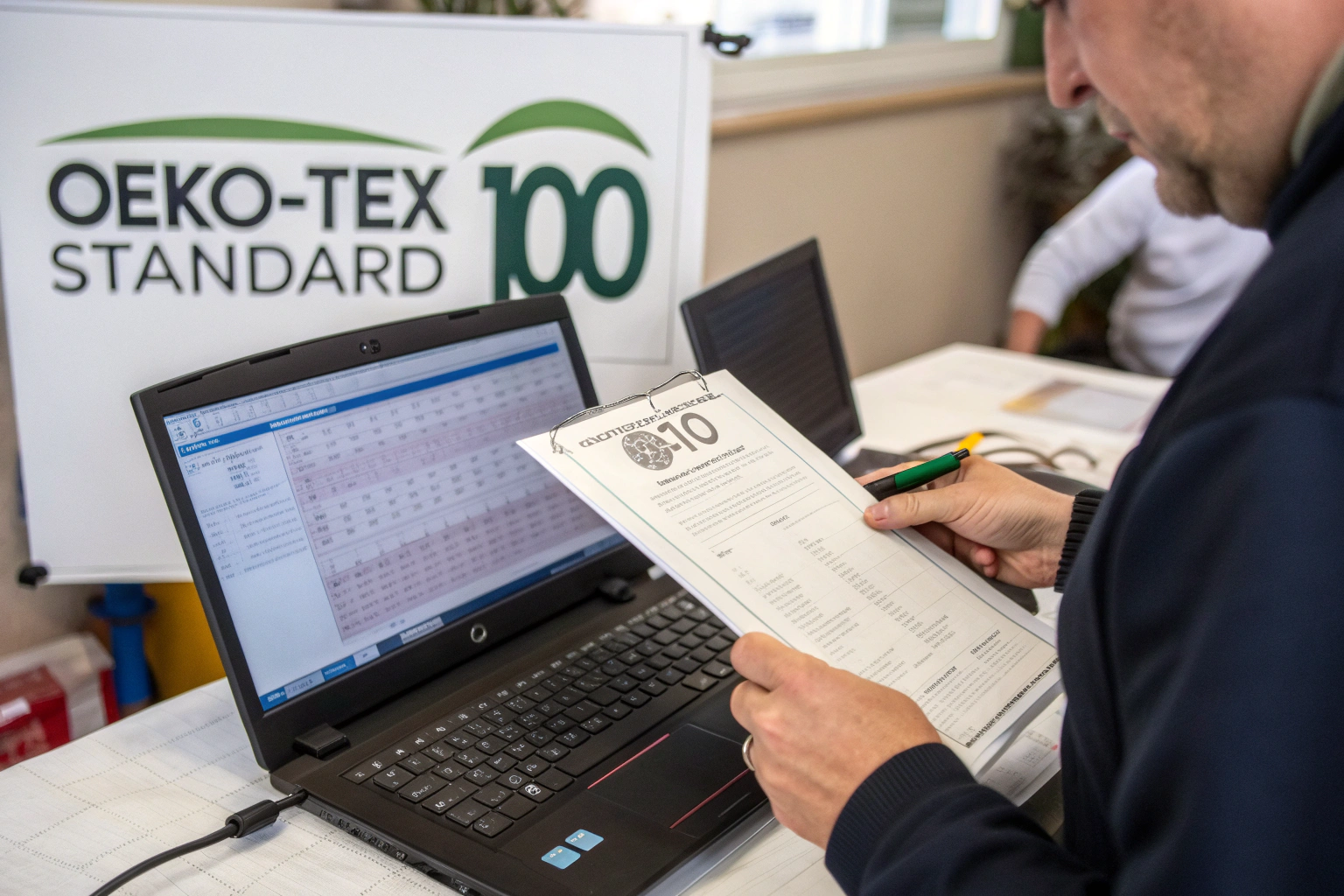As a fabric supplier based in Keqiao, I've seen a surge in global demand for certified textiles. Buyers, especially from the U.S., are increasingly asking, "Is this fabric truly OEKO-TEX® certified?" It's a crucial question. Verifying this certification isn't just about checking a label; it's about ensuring the entire supply chain is transparent and trustworthy. For importers like Ron, who are concerned about quality control and safety, getting this right is non-negotiable. It protects your brand and gives your customers peace of mind.
The most reliable way to verify an OEKO-TEX® Standard 100 certification from any supplier, including those in China, is to independently check the unique certificate number and the supplier's company name on the official OEKO-TEX® database. A genuine certificate is your guarantee that every component of the fabric has been tested for harmful substances. Simply asking for a certificate copy is not enough. Smart verification involves cross-referencing the provided details with the official source to confirm its validity and scope.
Let's dive deeper into the practical steps you can take. This process will empower you to confidently source safe, certified fabrics and build a more resilient supply chain.
How to check OEKO-TEX® certificate number?
When a supplier claims their fabric is OEKO-TEX® certified, the first thing you must do is ask for the certificate number. This number is the key to unlocking the truth. I've encountered situations where suppliers present outdated or even falsified documents. This initial step separates the professional partners from the rest. It's a simple request that any legitimate supplier should be able to fulfill immediately.
The certificate number is your direct link to the official record. Once you have it, go directly to the OEKO-TEX® certification database and enter it. This is the only way to be 100% sure. Do not rely on PDFs or printed copies alone, as they can be easily manipulated. The online database provides real-time, unchangeable data straight from the certifying body. It confirms the certificate is active and lists the specific product scope and the certified company's legal name.
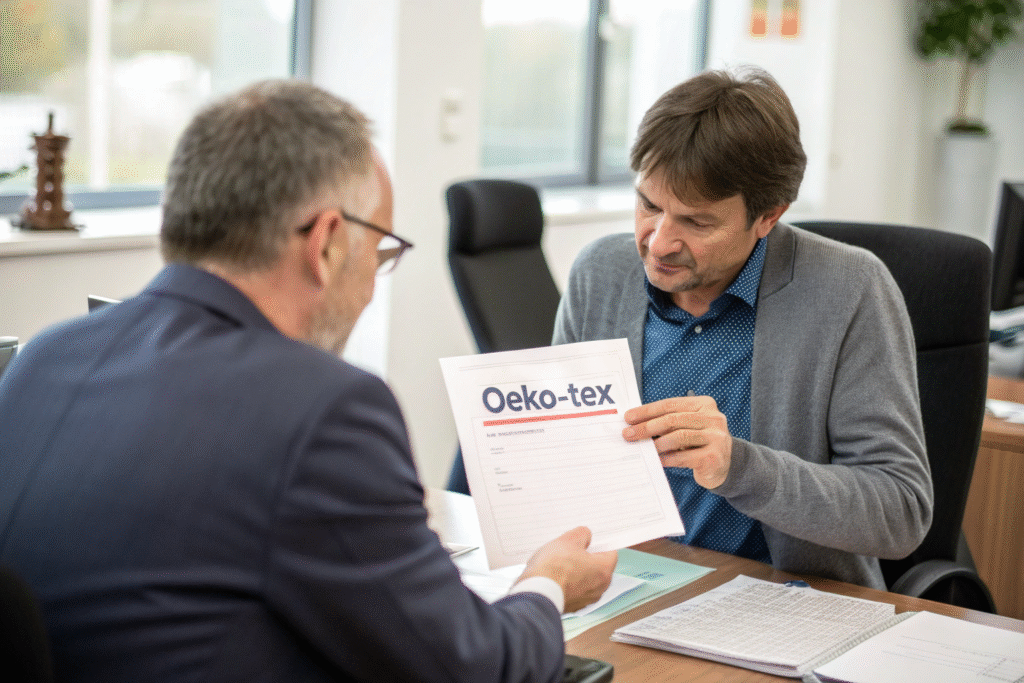
Why is the certificate number non-negotiable?
The certificate number is the unique identifier for that specific certification. It's not a generic license for the entire company. Each fabric type and composition often has its own certificate. When you verify this number, you are confirming several critical details. You can see the exact product class (I for baby items, II for skin-contact, etc.), the certified applicant's name, and the validity period. This prevents a supplier from using one certificate for all their products, which is a common misunderstanding. Always match the company name on the database with the supplier you are dealing with.
What details should you cross-reference online?
Once you access the database record, your job isn't over. You need to become a verification detective. Check these key points meticulously:
- Applicant Name: Does the legal name on the certificate exactly match your supplier's company name? Sometimes a parent company or a different legal entity is listed.
- Product Description: Does the described fabric match what you are ordering? A certificate for polyester does not cover a polyester-cotton blend.
- Validity Date: Is the certificate still valid? Certificates are typically valid for one year and must be renewed. An expired certificate is a red flag.
- Certifying Institute: Which OEKO-TEX® member institute issued it? Reputable ones include Hohenstein in Germany. You can verify the institute's legitimacy as well.
What are common fake OEKO-TEX® certificate signs?
In our two decades of operation, we've seen all the tricks. Fraudulent certificates are, unfortunately, a reality in the global textile market. Being able to spot the warning signs quickly will save you from costly mistakes. These fakes range from poorly edited PDFs to outright lies. Your due diligence is your primary defense. Trust, but always verify.
The most common signs of a fake certificate are blurry logos, missing or incorrect certificate numbers, and supplier hesitation to provide the number for independent verification. Grammatical errors on the document are another major red flag. Official certificates are issued by precise, professional institutions. If the document looks unprofessional, it probably is. The supplier's attitude is also telling; a legitimate partner will be transparent and helpful.
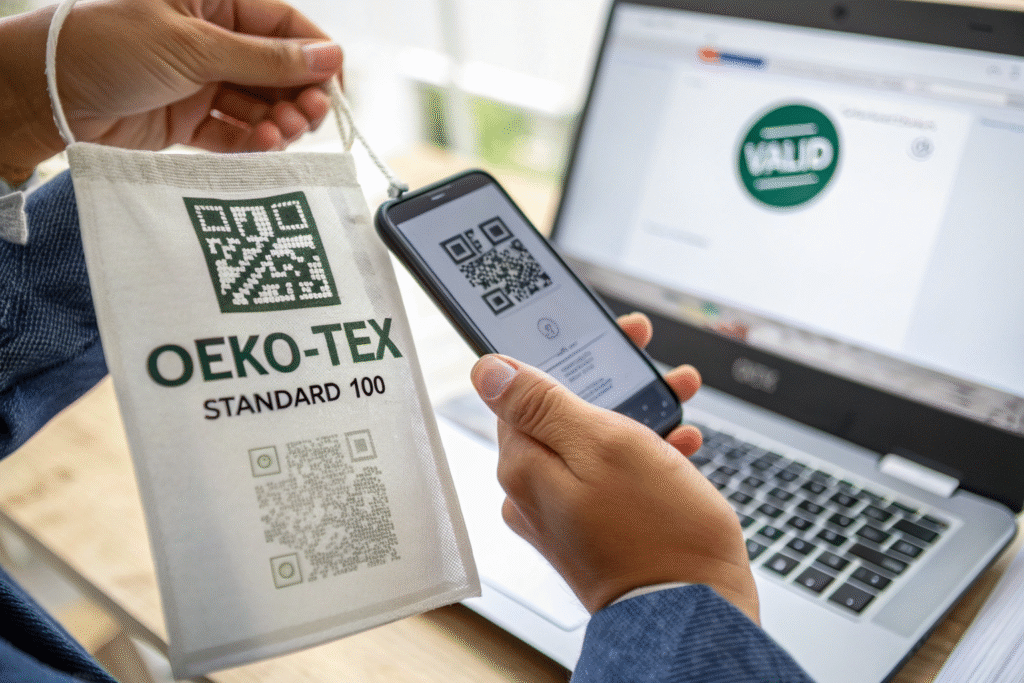
How to spot a forged certificate document?
A forged document often has subtle inconsistencies. Train your eye to look for these details:
- Low-Resolution Logos: The OEKO-TEX® logo should be crisp and clear. Pixelation is a sign of a copy-paste job.
- Inconsistent Fonts: Check if the font type and size are consistent throughout the document.
- Missing Watermarks: Official certificates often have subtle background watermarks for security.
- Spelling Mistakes: Look for errors in the company name, address, or product description. "OEKO-TEX" is often misspelled.
For a definitive reference on what a real certificate looks like, always consult the official OEKO-TEX® label finder page. This tool shows you examples of legitimate labels and certificates.
What questions should you ask the supplier?
Your conversation with the supplier can reveal as much as the document itself. Ask direct, specific questions and gauge their response.
- "Can you provide the unique certificate number for this specific fabric order?"
- "What is the product class of this certificate, and is it suitable for my intended use (e.g., children's wear)?"
- "Can you confirm the certifying body and the expiry date?"
A supplier who is evasive, provides a number that doesn't work, or claims a "company-wide" certificate without specific numbers is likely not providing a genuine certification. A transparent partner, like our operation at Fumao, will have all this information readily available for your audit.
Can I trust a supplier's in-house lab reports?
This is a nuanced question. A supplier's in-house lab, like our own CNAS-accredited facility, is a powerful tool for internal quality control and rapid R&D. We use ours for daily checks on colorfastness, shrinkage, and physical properties. However, when it comes to OEKO-TEX® Standard 100 certification, the answer is clear: in-house reports cannot replace the third-party certification. They are complementary, not equivalent.
Third-party certification exists to eliminate bias. An OEKO-TEX® certificate is issued by an independent institute that has no financial stake in the test results. This provides an objective, unbiased verification of safety that your brand can rely on. An in-house report, no matter how advanced the equipment, is a self-declaration. For a buyer like Ron, concerned about risk, the third-party certificate is the only acceptable proof for public claims about product safety.
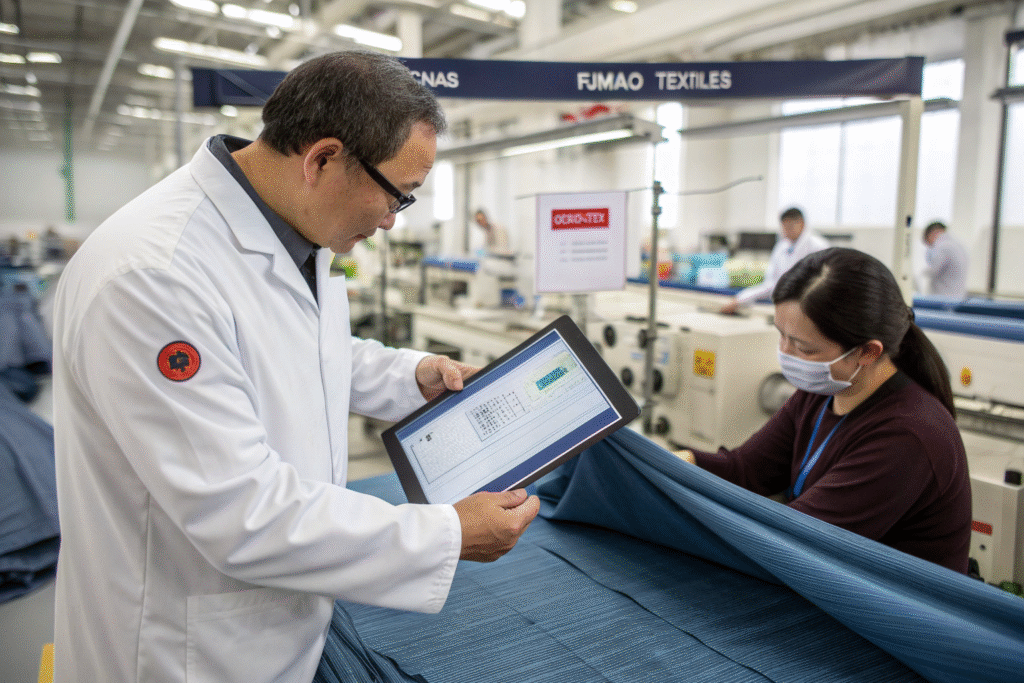
What is the role of a CNAS-accredited lab?
A lab with CNAS accreditation, like ours, adds a significant layer of credibility. CNAS means the lab's procedures and equipment meet international standards (ISO/IEC 17025). This is a strong indicator of a supplier's commitment to quality. It means the data we generate internally is reliable. We use it to pre-test fabrics before sending them for official OEKO-TEX® certification, which significantly increases our pass rate. For you, it means fewer surprises and faster development times. It's a sign of a sophisticated supplier, but it still does not replace the need for the final, independent OEKO-TEX® stamp of approval.
How do third-party and in-house tests compare?
Understanding the distinction helps you manage your sourcing strategy.
| Feature | Third-Party (OEKO-TEX®) Certification | In-House Lab Testing |
|---|---|---|
| Impartiality | High. Independent verification. | Low. Self-declaration by the supplier. |
| Global Recognition | Universal. Accepted by major brands. | Limited. Primarily for internal/supplier reference. |
| Scope | Tests for hundreds of harmful substances according to a strict standard. | Can be customized, but may not cover the full OEKO-TEX® list. |
| Brand Trust | Can be used publicly for marketing and hangtags. | Should not be used for public safety claims. |
What if my Chinese supplier cannot provide proof?
This is a clear stopping point. If a supplier cannot provide verifiable proof of OEKO-TEX® certification, you should not proceed with the order under the assumption that the fabric is certified. The risks are far too great. It calls into question not only the product's safety but also the supplier's overall integrity. In our experience, a supplier who is opaque about certification is often cutting corners elsewhere.
Your options are straightforward. You can walk away and find a certified supplier, or you can work with the supplier to obtain a new certification, understanding this involves cost and time. At Fumao, we guide our clients through this process. We can fast-track certification for specific orders because of our existing relationship with certifying bodies and our pre-testing capabilities. This is part of the value we add beyond just selling fabric.
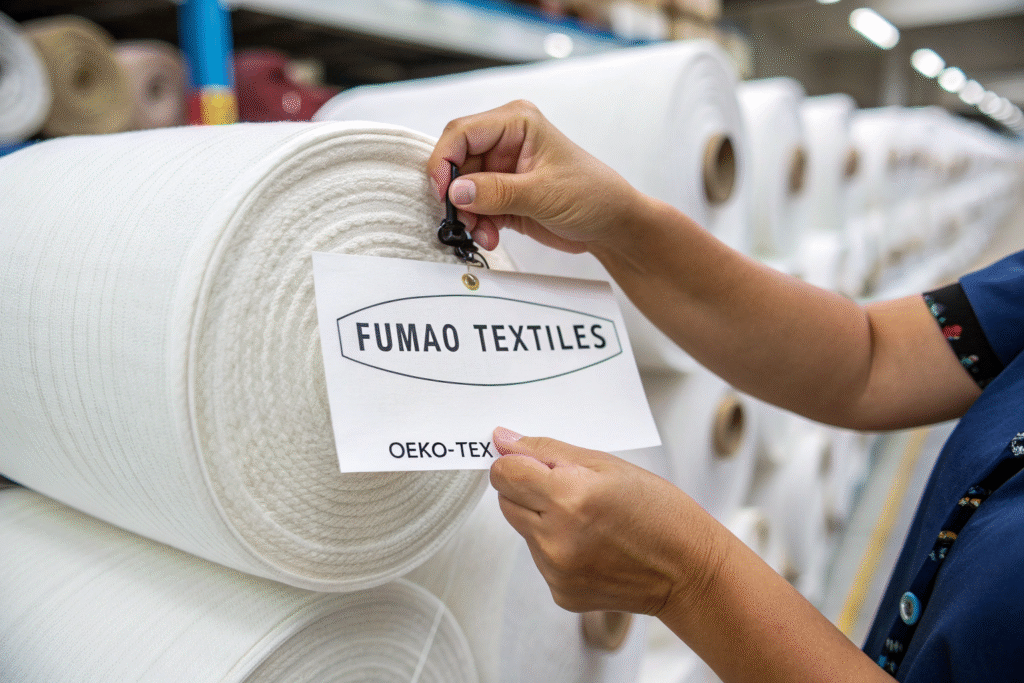
What are the risks of using uncertified fabric?
The risks extend beyond just failing a quality check. They can have serious financial and reputational consequences.
- Compliance Failures: Your products could be rejected at the border or pulled from shelves for failing safety standards in the U.S. or EU.
- Brand Damage: A scandal involving harmful substances in children's clothing, for example, can destroy consumer trust built over years.
- Legal Liability: You could face lawsuits or regulatory fines if your products cause harm.
- Wasted Costs: The cost of recalling and destroying an entire container of non-compliant goods is devastating.
How can a reliable partner ensure certification?
A reliable partner integrates certification into their supply chain, making it seamless for you. Here's how we do it at Fumao:
- Proactive Testing: Our in-house CNAS lab pre-tests fabrics against OEKO-TEX® standards during development.
- Established Relationships: We have direct channels with certification bodies like Hohenstein, streamlining the application and audit process.
- Full Transparency: We provide the certificate number before shipment and welcome you to verify it yourself. Our digital QC reports often include a direct link to the certification for your convenience.
This integrated approach is what allows us to offer a 48-hour sample development and quickly move to certified bulk production, mitigating the very timeliness and security concerns that buyers like Ron face.
Conclusion
Verifying OEKO-TEX® Standard 100 certification for fabrics sourced from China is a critical, multi-step process that protects your business. It starts with requesting the certificate number and ends with your own independent check on the official database. Be vigilant for signs of fraudulent documents and understand that in-house testing, while valuable, is not a substitute for independent, third-party certification. Partnering with a supplier who has integrated certification into their process, with transparent practices and accredited in-house labs, is the most efficient way to secure a safe, reliable, and compliant supply chain.
Navigating the complexities of certified fabric sourcing doesn't have to be a solo mission. If you are looking for a partner that guarantees OEKO-TEX® Standard 100 certification with full transparency and agile service, let's talk. We have the infrastructure and the expertise to ensure your fabric is not only high-quality but also fully compliant. For a direct conversation about your specific needs, please contact our Business Director, Elaine, at elaine@fumaoclothing.com. We are ready to help you weave confidence into your next collection.

